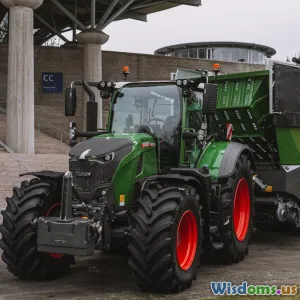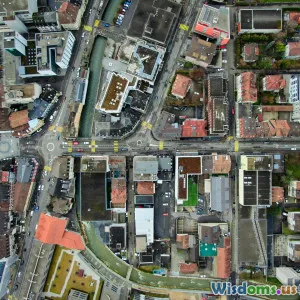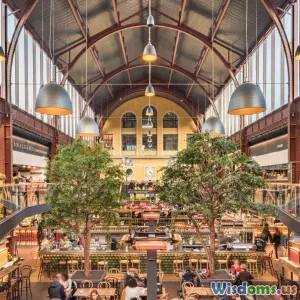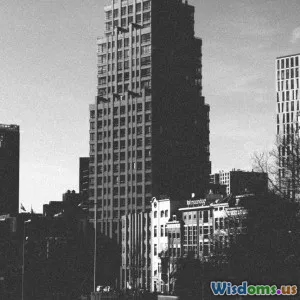
Urban Farming: Sustainable City Solutions
8 min read Discover how urban farming is transforming cityscapes into sustainable, green hubs through innovative architecture and design. (0 Reviews)
Urban Farming: Sustainable City Solutions
Cities around the world are bustling centers of human activity yet often suffer from a disconnect between urban life and food production. As the global population continues to swell and environmental concerns become more pressing, urban farming emerges not merely as a trend but as a critical sustainable city solution. Incorporating agricultural practices into urban environments through clever architecture and urban design addresses food security, reduces environmental impact, and fosters community resilience. This article explores how urban farming is poised to transform cities into greener, more sustainable living spaces.
The Rise of Urban Farming: Context and Importance
Traditionally, agriculture was a rural activity far removed from the urban jungles. However, by 2050, it is estimated that nearly 68% of the global population will reside in cities (United Nations, 2018). This demographic shift demands innovative approaches to ensure food availability, safety, and sustainability. Urban farming answers these needs by bringing food production closer to consumers while mitigating supply chain complexities.
Moreover, urban agriculture offers benefits beyond nutrition:
- Environmental Impact: Reduction of carbon emissions due to decreased food transportation.
- Economic Benefits: Job creation and potential economic growth within urban communities.
- Social Renewal: Community engagement, educational opportunities, and improved mental health.
Cities like Singapore, Tokyo, and New York provide pioneering examples of sophisticated urban farming integration, setting a benchmark for sustainable urban development globally.
Architecture Meets Agriculture: Innovative Design Strategies
Vertical Farming and High-Rise Gardens
To maximize limited urban space, architects have embraced vertical farming—a method of growing crops in stacked layers. Vertical farms can be incorporated inside buildings, on rooftops, or as part of new developments.
Example: The 480-foot tall Sky Greens vertical farm in Singapore uses rotating tiers and a water-driven hydraulic system to grow fresh greens year-round. This approach saves up to 95% of water compared to traditional fields and produces exactly what the urban population needs nearby.
Green Roofs and Living Walls
Green roofs transform barren rooftops into productive spaces for growing vegetables, herbs, and fruits. These installations reduce urban heat islands, absorb rainwater, and provide insulation, lowering building energy demands.
Living walls, or vertical gardens, enhance façade aesthetics while also producing edible plants.
Example: The Bosco Verticale (Vertical Forest) in Milan combines residential living with lush greenery integrated into balconies, which serves to improve air quality and promote biodiversity in a dense urban context.
Repurposed Spaces: From Abandoned Lots to Urban Farms
Vacant lots and underused urban spaces are prime real estate for urban farms that double as community hubs.
In Detroit, the urban farming movement revitalized neighborhoods hit by industrial decline, turning empty parcels into luscious gardens yielding fresh produce. The Michigan Urban Farming Initiative also focuses on youth education and social equity.
Sustainable Technologies Powering Urban Farming
Technological advances underpin the efficiency and sustainability of urban farming:
- Hydroponics and Aquaponics: Soil-less farming techniques that reduce water usage by up to 90%. Aquaponics also integrates fish farming with plants in a symbiotic system.
- LED Grow Lights: Energy-efficient lights provide optimal spectra for plant growth year-round indoors.
- Integrated Sensor Systems: IoT devices monitor temperature, humidity, nutrient levels, and pest presence, enabling precision agriculture within buildings.
These often take place within “smart farms”—urban farming setups connected to data systems, helping optimize production while minimizing waste.
Environmental and Societal Impacts
Climate and Environmental Benefits
By drastically reducing the distance food travels, urban farms cut transportation-related greenhouse gas emissions. Rooftop and vertical gardens also sequester carbon and reduce urban heat islands, mitigating city temperatures which can reach up to 7°F higher than surrounding rural areas.
Food Security and Public Health
Growing food locally enhances food security by providing vulnerable urban populations access to fresh nutrition. Urban farms often supply fresh, pesticide-free fruits and vegetables which combat “food deserts” —areas lacking fresh produce.
Social Inclusion and Education
Urban farming projects foster community engagement, creating spaces for marginalized communities to participate in food production. Schools and non-profits leverage urban farms to teach sustainability, nutrition, and science, promoting healthier lifestyles.
Example: The Brooklyn Grange in New York runs rooftop farms that not only harvest 100,000 pounds of produce yearly but also host educational workshops, boosting community involvement.
Urban Farming Challenges and Solutions
While the benefits of urban farming are compelling, challenges persist:
- Space Constraints: Innovative use of vertical spaces and rooftops is crucial.
- Initial Costs: High installation and operational costs can deter investment.
- Regulatory Hurdles: Changing zoning laws and building codes to accommodate urban agriculture.
- Pollution and Soil Contamination: Strategies such as using raised beds or hydroponics mitigate these risks.
Cities like Paris, with its Parisculteurs initiative, exemplify governments actively supporting urban agriculture through subsidies, relaxed regulations, and public-private partnerships.
The Future: Urban Farming as an Urban Planning Imperative
Incorporating urban farming into city planning ensures resilient urban ecosystems. Future-focused architecture will likely embed multifunctional green spaces within residential and commercial buildings as standard components.
Policy makers should embrace incentives for developers to integrate food production elements, such as tax breaks or grants. Public awareness campaigns and education must also amplify the societal value of urban farming.
Furthermore, interdisciplinary collaboration between architects, urban planners, agronomists, and community leaders will drive innovation and adoption.
Conclusion
Urban farming is redefining the relationship between cities and food supply, turning concrete jungles into dynamic, sustainable ecosystems. Through architectural ingenuity, technological advances, and community involvement, urban agriculture offers a transformative blueprint for sustainable city living. As more cities adopt these practices—cultivating green spaces vertically, repurposing urban real estate, and integrating technology—the prospects for an environmentally resilient and socially inclusive urban future grow brighter. Urban farming is no longer just an alternative; it is a critical piece of sustainable urban design solutions to feed, cool, and heal our cities for generations to come.
Rate the Post
User Reviews
Popular Posts





















